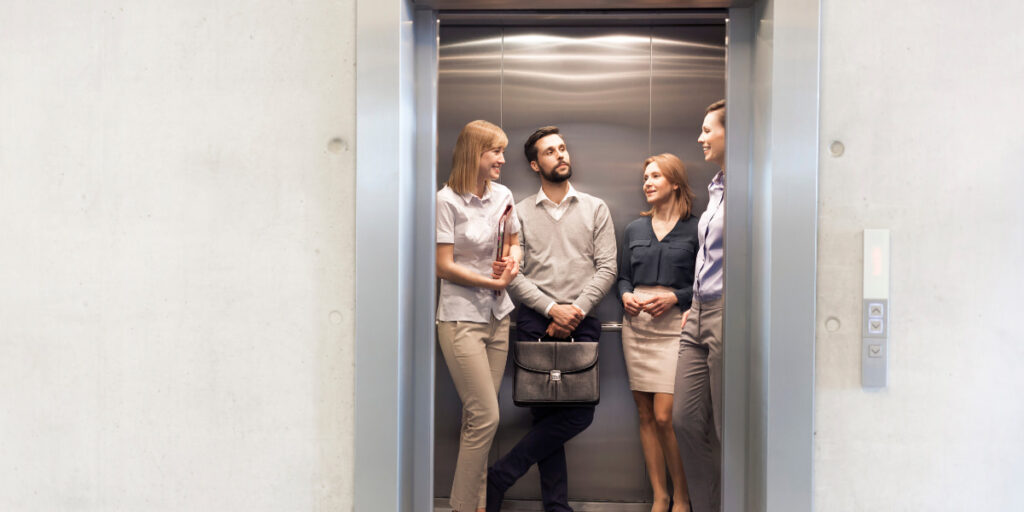
At the grocery store, in the elevator, or at your own dinner table, comfort depends on more than words. Personal space etiquette shapes how relaxed you feel and how safe others feel too.
Respecting boundaries matters for friendships, work, and even brief encounters with strangers. When you know how to notice cues and respond, your conversations and relationships flow more smoothly and misunderstandings fade away.
This article shows you practical ways to spot the signals, adjust your habits, and navigate the do’s and don’ts of personal space etiquette wherever you go. Let’s make respect the norm in every interaction.
Reading Nonverbal Cues Leads to Better Boundaries Instantly
Practicing personal space etiquette begins with seeing body language as a conversation. People reveal comfort or discomfort with posture, eye contact, and distance—so pay close attention in every setting.
If someone steps back as you approach, glances away, or folds their arms, treat these as gentle requests for more space. Changing your position or movement right away will foster trust and ease tension.
Spot Everyday Indicators of Boundary Needs
A friend may stand with their feet angled away or keep objects (like a purse or bag) between you. These small actions signal a need for distance without a word being spoken.
During a conversation, if the other person leans backward or shifts their weight, it’s an invitation to pause or give space. Say, “Let me give you a little room,” as you adjust your stance.
Personal space etiquette involves reading both subtle and obvious signals. At work, if a colleague moves their chair slightly away, respect their decision and let them initiate closeness if needed.
Mirror and Adjust for Immediate Comfort
Observe the posture of the person you’re speaking with. If they keep their arms at their sides, mirror this comfort level. When they cross arms or step back, gently increase the space between you.
In social gatherings, try matching your body language to the group. If everyone has a comfortable gap, align yourself with the unspoken group norm, showing awareness of personal space etiquette.
If you feel unsure, err on the side of giving more room. People relax quickly when they notice you making the effort to respect their boundaries. Mindfully mirroring creates a welcoming environment.
| Setting | Common Cues | Appropriate Response | Actionable Takeaway |
|---|---|---|---|
| Elevator | Stepping away, avoiding eye contact | Stand apart, give silence | Wait for others to choose their space first |
| Office | Sliding chair back, turned body | Move desk items, allow space | Ask “Would you like more room?” |
| Social Gathering | Group forms loose circle | Stay on the edge not in the middle | Use open gestures, keep casual |
| Line/Queue | Shuffling forward, repeated glances | Keep a gap of 2-3 feet | Stand slightly back until invited forward |
| Family Meal | Placing objects between, quiet tone | Sit with a gap, adjust chair | Notice mood; ask if closer is okay |
Practical Boundaries Make Close Relationships Stronger
You can nurture healthier connections by building consistent boundary habits and understanding when closeness feels safe and welcome. Personal space etiquette becomes second nature with the right routines.
Setting small rituals—like asking permission before a hug or waiting to enter a friend’s home—lets everyone relax. Sensitivity to space isn’t coldness; it’s a direct investment in respect.
Scripted Sentences to Ask and Respond
A simple check-in sounds like, “Is it OK if I sit here?” or, “Would you like a hug?” Use these scripts to invite comfort without pressure and make room for honest replies.
- Ask before moving closer to show you value autonomy. This habit helps friends and family feel seen.
- Gently refuse by saying, “I need a little more room right now,” to express your needs without criticism.
- Notice when conversation partners glance at the exit; offer an out with, “We can pause if you need a break.”
- At gatherings, suggest, “Let me sit here so you have space,” to make others comfortable.
- Use, “Let me know if I’m too close,” to invite feedback and develop trust in all types of relationships.
Consistently offering options builds trust. If someone needs more distance, respond immediately with kindness and don’t debate or search for explanations.
Micro-Boundaries for Shared Spaces
Personal space etiquette matters especially in shared homes or offices. Agree on silent signals—like an object on the door to mean “do not disturb”—for moments of privacy.
- Agree on break times when living with roommates, signaling when it’s okay to join or when solo time is valued.
- Arrange common areas so everyone can choose where to sit and maintain comfort without negotiation every time.
- Leave headphones on a desk as a gentle reminder of the need for quiet focused time at work.
- Check in before entering bedrooms or private offices, even if the door’s open, respecting unwritten household rules.
- Organize family meals with set places so each member can opt for more or less closeness day by day.
When routines support boundaries, there’s less friction and fewer misunderstandings. Small steps, like these, make everyday life flow better for everyone involved.
Physical Distance Promotes Equity and Reduces Stress
Creating fair space isn’t just about preference—it helps avoid power imbalances at work, school, and beyond. Personal space etiquette breaks down barriers and gives everyone a voice.
Choices Shape Openness at Work
Positioning yourself at a shared table without crowding sides lets colleagues know collaboration is safe and no one dominates. Open chairs and even spacing mean all voices get heard.
A manager who meets staff at a round table rather than behind a desk removes physical and psychological gap. Actions like, “Let’s pull our chairs together,” foster unity instantly.
Respecting personal space etiquette at work sets the stage for honest feedback. Team members notice fair treatment, making group tasks smoother and meetings more productive.
Respect Protects Diversity and Inclusion
Some cultures or individuals prefer larger personal bubbles. Avoid assuming your habits are universal. Learn and ask, especially in multicultural workplaces or new social circles.
If a coworker says, “I’m comfortable with a bit more space between us,” honor that every time without exception. Adapting to these needs sends a clear message of belonging.
Personal space etiquette means adjusting to context. Instead of forcing a one-size-fits-all distance, observe each person’s comfort zone and change your approach as needed.
Flexible Habits Lower Family Friction at Home
Within families, setting and respecting boundaries strengthens trust, cuts arguments, and allows for healthier relationships. Home can truly feel safe with a few conscious choices around space.
Silent Agreements Prevent Daily Tension
Families benefit from clear, practical signals: a closed door means privacy, quiet in shared spaces signals reflection, and shared schedules communicate availability or desire for solitude.
Instead of assuming, ask: “Would you like a few minutes alone?” and step out if needed. Over time, these habits create a sense of security for every family member.
Personal space etiquette in the home becomes easier as everyone agrees on routines, from knock-before-enter rules to using technology (like sending a text) for quick check-ins.
Responsive Parenting Sets Positive Examples
Parents role-model healthy space by asking children before hugging, allowing teens private retreats, and respecting quiet times after school or work.
“Can I sit with you?” or “Would you like company?” shows children that their comfort matters. This empowers kids to voice their needs or stand up for themselves in the future.
Family routines that reinforce personal space etiquette reduce conflicts. Everyone learns it’s okay to ask for space—teaching skills children use in other settings, too.
Practical Respect for Space Creates Effortless Harmony
Respecting boundaries shows others that their comfort matters. By applying personal space etiquette in moments big and small, you help every relationship grow calmer and more rewarding.
Cues, scripts, and small routines remove awkwardness. Every step—whether pausing before a hug or giving a colleague space—signals care in everyday life and across different cultures.
Making personal space etiquette a habit keeps peace, builds trust, and allows people to thrive everywhere. A few mindful choices every day create a lasting foundation for genuine connection.
Frequently Asked Questions
How can I tell if someone wants more personal space?
Look for cues like stepping back, turning away, or crossed arms. If you notice these, offer space with phrases like, “Let me give you a little room.” Readjusting your position promptly helps build trust.
What’s a polite way to ask for more space when someone is too close?
Use clear, direct language without blaming, such as “Could you give me a little more room?” Paired with a friendly tone or smile, this request comes across as respectful and gives the other person guidance.
Are personal space requirements the same everywhere?
No, these expectations vary by region, culture, and even between individuals. It’s best to observe and ask, especially when in new environments, and adapt your distance based on what others show is comfortable for them.
How can I teach children about personal space etiquette?
Model asking before hugging or sitting close. Encourage kids to use words or signals when they need space. Reinforce positive behavior whenever they respect others’ boundaries; gentle, clear guidance makes the lesson stick.
Why does personal space etiquette matter at work?
Maintaining the right distance builds professional trust, prevents misunderstandings, and supports collaboration. Respecting boundaries ensures that all voices contribute equally and strengthens the overall work environment for everyone involved.

Practical Travel Manners
Practical travel manners keep your journeys respectful, helping you connect with cultures and leave positive impressions everywhere.

